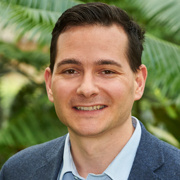Mitarbeiter*innen

Prof. Dr. Andreas Walther
Professor für Makromolekulare Materialien und Systeme
Department Chemie
Johannes Gutenberg-Universität Mainz
Areas 0f Expertise
Adaptive, active and autonomous bioinspired materials systems | Hierarchical, directed, dissipative & non-equilibrium self-assembly | Biomimetic & functional materials | Feedback & temporal control | Macromolecules & supramolecular chemistry | Structural materials and mechanics
Projekte in livMatS
- Training Materials like Muscles
- Dissipative systems engineering: Chemically fueled active molecular systems
- Logic Self-Reporting Mechano-Adaptive Metamaterials
- Autonomous light-actuated LCE actuators
Doktorand*innen (Erstbetreuer)
Publikationen in livMatS
- Communication and Cross-Regulation between Chemically Fueled Sender and Receiver Reaction Networks*
Sun, M., Deng, J., & Walther, A. (2022). Communication and Cross‐Regulation between Chemically Fueled Sender and Receiver Reaction Networks. Angewandte Chemie. doi: 10.1002/ange.202214499 - Inside a Shell – Organometallic Catalysis Inside Encapsulin Nanoreactors*
Lohner, P., Zmyslia, M., Thurn, J., Pape, J. K., Gerasimaite, R., Keller-Findeisen, J., Groeer, S., Deuringer, B., Süss, R., Walther, A., Hell, S. W., Lukinavicius, G., Hugel, T., & Jessen-Trefzer, C. (2021). Inside a Shell–Organometallic Catalysis Inside Encapsulin Nanoreactors. Angewandte Chemie. doi: 10.1002/anie.202110327 - Tunable and Large-Scale Model Network StarPEG-DNA Hydrogels*
Akintayo, C. O., Creusen, G., Straub, P., & Walther, A.(2021). Tunable and Large-Scale Model Network StarPEG-DNA Hydrogels. Macromolecules. doi: 10.1021/acs.macromol.1c00600 - Scalable One-Pot-Liquid-Phase Oligonucleotide Synthesis for Model Network Hydrogels*
Creusen, G., Akintayo, C. O., Schumann, K., & Walther, A. (2020). Scalable One-Pot-Liquid-Phase Oligonucleotide Synthesis for Model Network Hydrogels. Journal of the American Chemical Society, 142(39), 16610-16621. doi: 10.1021/jacs.0c05488 - ATP‐Responsive and ATP‐Fueled Self‐Assembling Systems and Materials*
Deng, J., & Walther, A. (2020). ATP‐Responsive and ATP‐Fueled Self‐Assembling Systems and Materials. Advanced Materials, 32(42), 2002629. doi: 10.1002/adma.202002629 - Programmable ATP-Fueled DNA Coacervates by Transient Liquid-Liquid Phase Separation*
Deng, J., & Walther, A. (2020). Programmable ATP-Fueled DNA Coacervates by Transient Liquid-Liquid Phase Separation. Chem. doi: doi.org/10.1016/j.chempr.2020.09.022 - Functional and morphological adaptation in DNA protocells via signal processing prompted by artificial metalloenzymes*
Samanta, A., Sabatino, V., Ward, T. R., & Walther, A. (2020). Functional and morphological adaptation in DNA protocells via signal processing prompted by artificial metalloenzymes. Nature Nanotechnology, 1-8. doi: 10.1038/s41565-020-0761-y
(Journal Cover) - ATP-powered molecular recognition to engineer transient multivalency and self-sorting 4D hierarchical systems*
Deng, J., & Walther, A. (2020). ATP-powered molecular recognition to engineer transient multivalency and self-sorting 4D hierarchical systems. Nature communications, 11(1), 1-13. doi: 10.1038/s41467-020-17479-9 - Polymer Transformers: Interdigitating Reaction Networks of Fueled Monomer Species to Reconfigure Functional Polymer States*
Sun, M., Deng, J., & Walther, A. (2020). Polymer transformers: interdigitating reaction networks of fueled monomer species to reconfigure functional polymer states. Angewandte Chemie International Edition, 59(41), 18161-18165. doi: 10.1002/anie.202006526 - Multiple Light Control Mechanisms in ATP‐fueled Non‐Equilibrium DNA Systems*
Deng, J., Bezold, D., Jessen, H., & Walther, A. (2020). Multiple Light Control Mechanisms in ATP‐Fueled Non‐equilibrium DNA Systems. Angewandte Chemie International Edition. doi: 10.1002/anie.202003102 - Viewpoint: From Responsive to Adaptive and Interactive Materials and Materials Systems: A Roadmap*
Walther, A.. (2020). From Responsive to Adaptive and Interactive Materials and Materials Systems: A Roadmap. Advanced Materials, 32(20), 1905111. doi: 10.1002/adma.201905111
* Funded by the Deutsche Forschungsgemeinschaft (DFG, German Research Foundation) under Germany's Excellence Strategy – EXC-2193/1 – 390951807